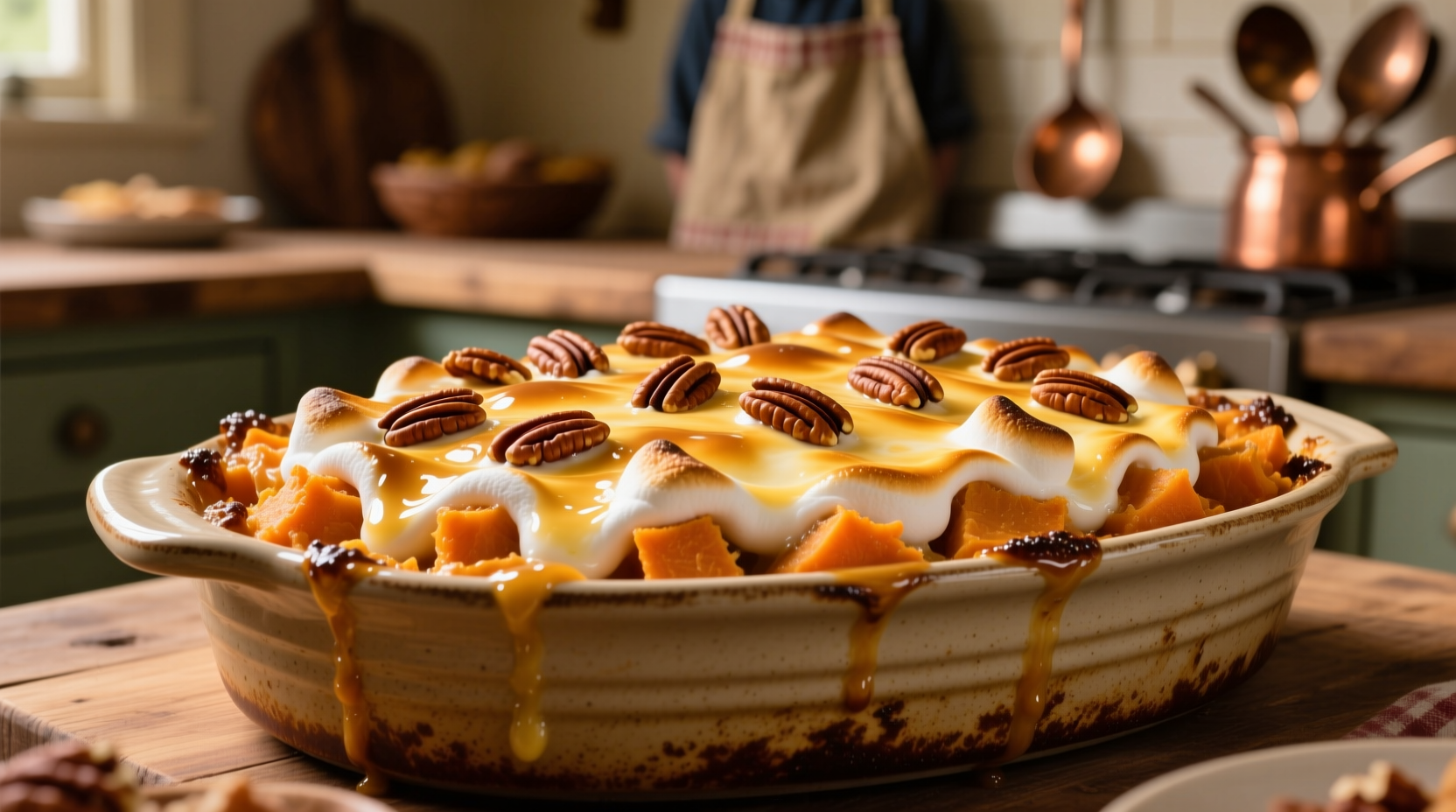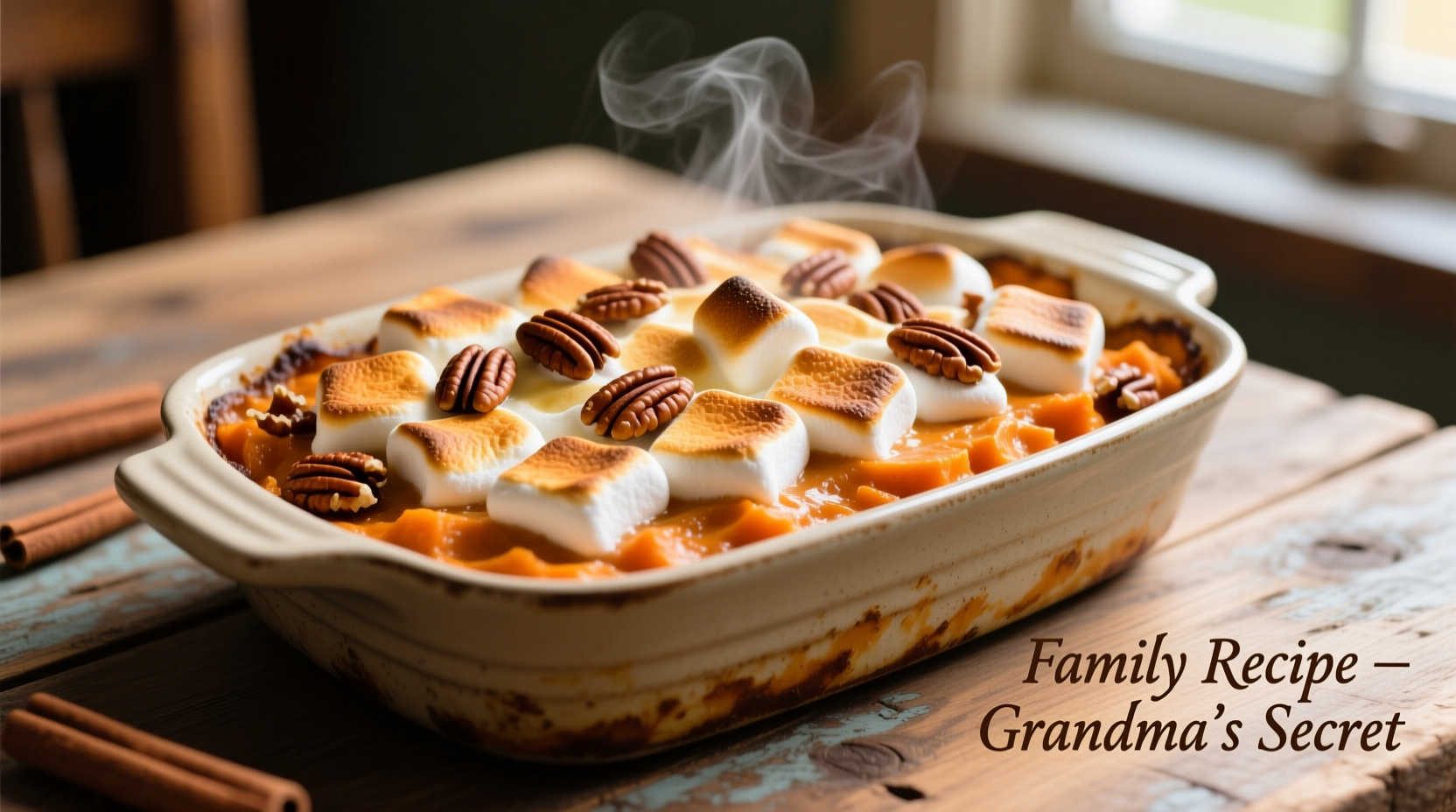There's a reason this beloved dish appears on Thanksgiving and Christmas tables across America. More than just a side dish, sweet potato casserole with marshmallows and pecans represents generations of culinary tradition, resourcefulness, and celebration. Whether you're preparing your first holiday meal or perfecting a family recipe passed down through decades, this guide delivers everything you need for flawless results every time.
The Story Behind This Holiday Staple
Sweet potatoes originated in Central and South America over 5,000 years ago, later becoming a staple in Southern US cuisine after Spanish explorers introduced them to Europe in the 15th century. The marshmallow-topped version emerged during the early 20th century when the Angelus Marshmallow Company included sweet potato recipes in their packaging to boost sales. By the Great Depression, this affordable luxury became a holiday tradition, with the pecan topping adding Southern flair.
| Era | Key Development | Cultural Significance |
|---|---|---|
| Pre-1500s | Sweet potatoes cultivated in Central/South America | Staple food for indigenous populations |
| 1917 | First published marshmallow-sweet potato recipe | Marketing innovation during WWI food conservation |
| 1930s | Widespread adoption during Great Depression | Affordable holiday luxury using pantry staples |
| 1950s-present | Pecan topping becomes standard variation | Southern culinary identity solidifies nationally |
Ingredient Science: Why Each Component Matters
Understanding your ingredients transforms this simple recipe into a culinary masterpiece. The best sweet potato casserole with marshmallows starts with selecting the right sweet potatoes. While all varieties work, Beauregard and Jewel types provide the ideal balance of sweetness and moisture. Avoid white-fleshed sweet potatoes, which lack the necessary sugar content.
For the marshmallow topping, mini marshmallows melt more evenly than standard size, creating that signature gooey layer without burning. The pecan streusel topping requires toasted pecans—either halves for presentation or chopped for maximum crunch. Toasting pecans in a dry skillet for 3-5 minutes before chopping enhances their natural oils and deepens the flavor profile.

Step-by-Step Preparation Guide
Follow these professional techniques for perfect results:
Sweet Potato Perfection
Boiling versus baking creates different textures. For the creamiest filling, bake sweet potatoes at 400°F for 45-60 minutes until fork-tender. This concentrates flavors better than boiling, which can make potatoes waterlogged. After cooling, scoop flesh from skins—this prevents stringy texture from boiled potatoes.
Mixing Mastery
Use a hand mixer on low speed to combine ingredients. Overmixing incorporates too much air, causing the casserole to separate during baking. The ideal consistency resembles thick mashed potatoes—smooth but still holding shape. Add eggs one at a time, mixing just until incorporated.
Layering Logic
Spread the sweet potato mixture evenly in a greased 9x13-inch dish. Create a slight well in the center to prevent overflow. Sprinkle mini marshmallows in a single layer—overcrowding causes uneven melting. Add the pecan streusel topping after the marshmallows have partially melted (about 15 minutes into baking) to maintain its crunch.
Troubleshooting Common Issues
Runny filling? You likely used too much liquid or undercooked sweet potatoes. Next time, reduce milk by 1-2 tablespoons and ensure potatoes are thoroughly baked.
Burnt marshmallows? Cover loosely with foil during the final 10 minutes of baking. For perfect golden-brown topping, watch carefully during the last 5 minutes.
Dry texture? This happens when sweet potatoes are overbaked or too much flour gets incorporated. Try adding an extra egg yolk next time for richer moisture.
Make-Ahead and Storage Tips
Prepare the sweet potato base up to two days ahead—store covered in the refrigerator. Assemble with toppings just before baking. Leftovers keep well for 3-4 days refrigerated. Reheat individual portions at 350°F for 15-20 minutes, covering with foil to prevent over-browning. Freezing the base (without toppings) works well for up to 3 months—thaw overnight before finishing.
When This Dish Shines (And When to Choose Alternatives)
This traditional sweet potato casserole with pecan topping excels as a Thanksgiving or Christmas side dish, complementing turkey, ham, or roast beef. Its sweet profile balances savory mains beautifully. However, for lighter meals or summer gatherings, consider roasted sweet potatoes with herbs instead. The marshmallow version works best when:
- Serving 8+ guests (feeds crowds efficiently)
- Complementing rich holiday proteins
- Creating nostalgic family traditions
- When you want make-ahead convenience
Avoid this version for brunches or lighter meals where its sweetness might overwhelm. For those occasions, try a savory sweet potato hash instead.
Perfect Pairings for Your Holiday Table
This classic southern sweet potato casserole pairs beautifully with:
- Herb-roasted turkey with giblet gravy
- Honey-glazed ham
- Cornbread dressing with sausage
- Cranberry sauce with orange zest
- Green bean casserole (for the ultimate comfort food spread)
For beverages, try a medium-bodied red wine like Pinot Noir or a sparkling cider. The sweetness of the casserole balances the wine's acidity perfectly.











 浙公网安备
33010002000092号
浙公网安备
33010002000092号 浙B2-20120091-4
浙B2-20120091-4